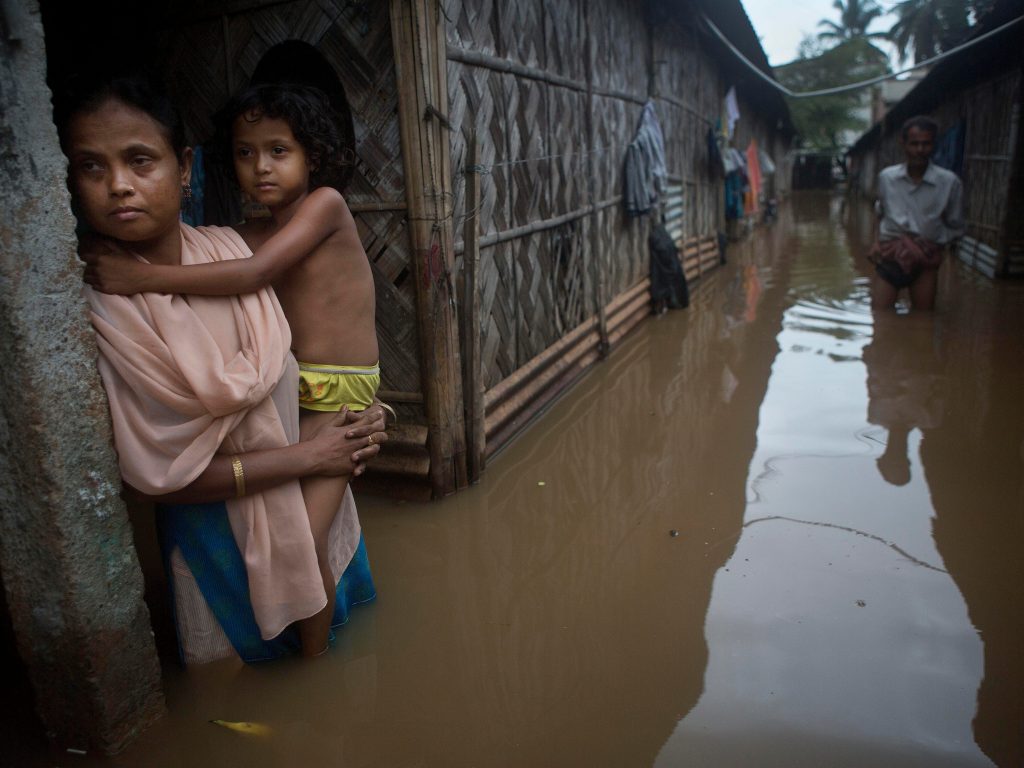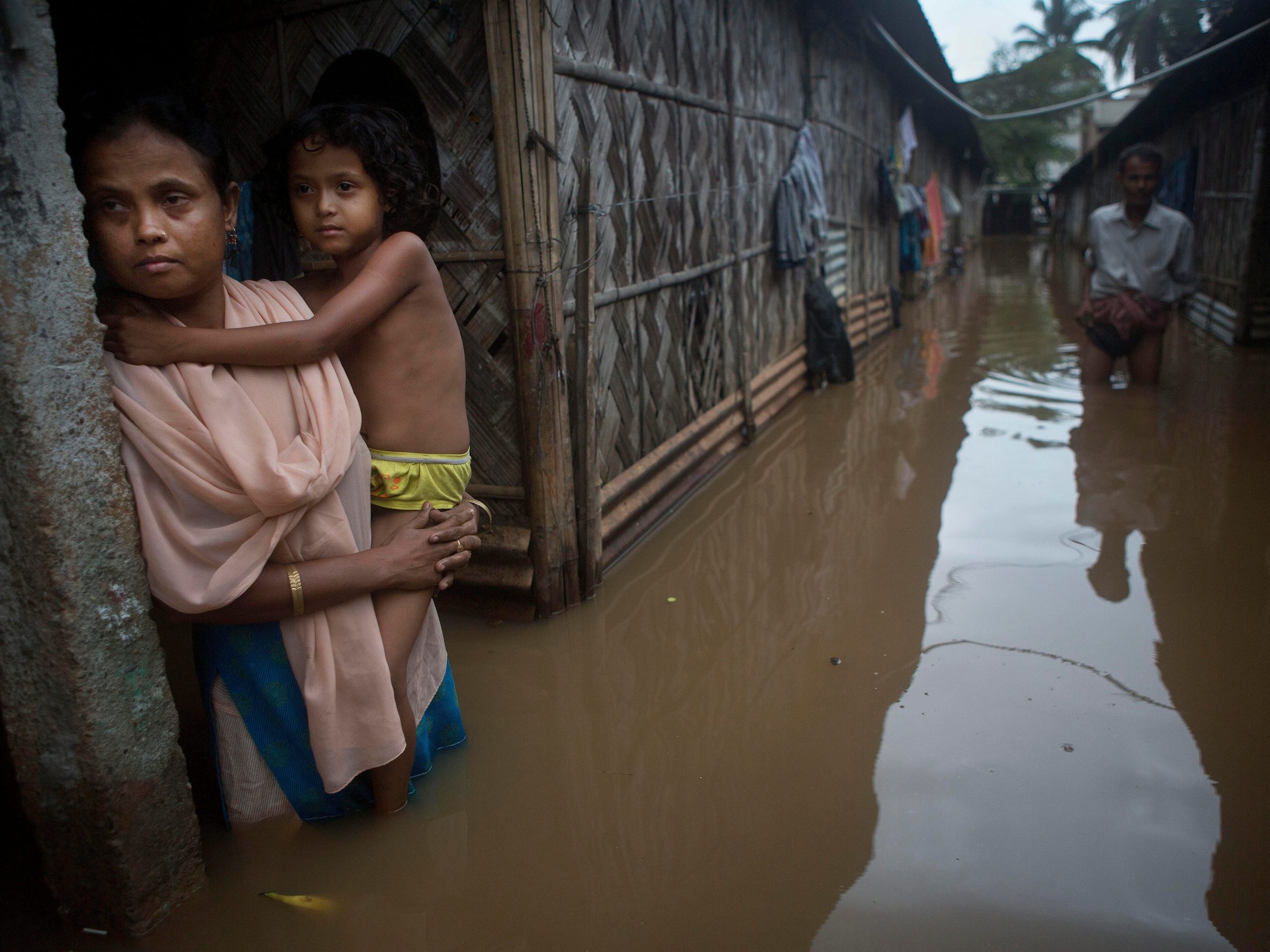
Anupam Nath, File/Associated Press
- More than 1 billion children are at extreme risk for weather disasters, a UNICEF report found.
- The majority of these kids live in countries that contribute the least to carbon emissions.
- High-risk countries are already facing extreme heat, water scarcity, flooding and other impacts.
Tahsin Uddin, a 23-year-old climate activist who lives in the southern city of Barisal in Bangladesh, has already lost one family home to coastal flooding and rising sea levels. Within the next few years, he expects his current home to be submerged under water as well.
Uddin is just one of the millions of Bangladeshis and others across the globe facing the brutal consequences of the climate crisis.
By 2050, more than 20 million Bangladeshis will be displaced and nearly 20% of the country's land will be underwater because of rising sea levels, a direct impact of the changing climate, according to the Natural Resources Defense Council, a nonprofit climate advocacy group.
Uddin told Insider the impact of those rising sea levels can be seen throughout the country: "I go to different coastal areas. I saw how much people are suffering. They are trying to survive by drinking salty water. Saline water is very dangerous for their health."
While the consequences of climate change are pummeling Bangladesh, it contributes very little to carbon emissions.
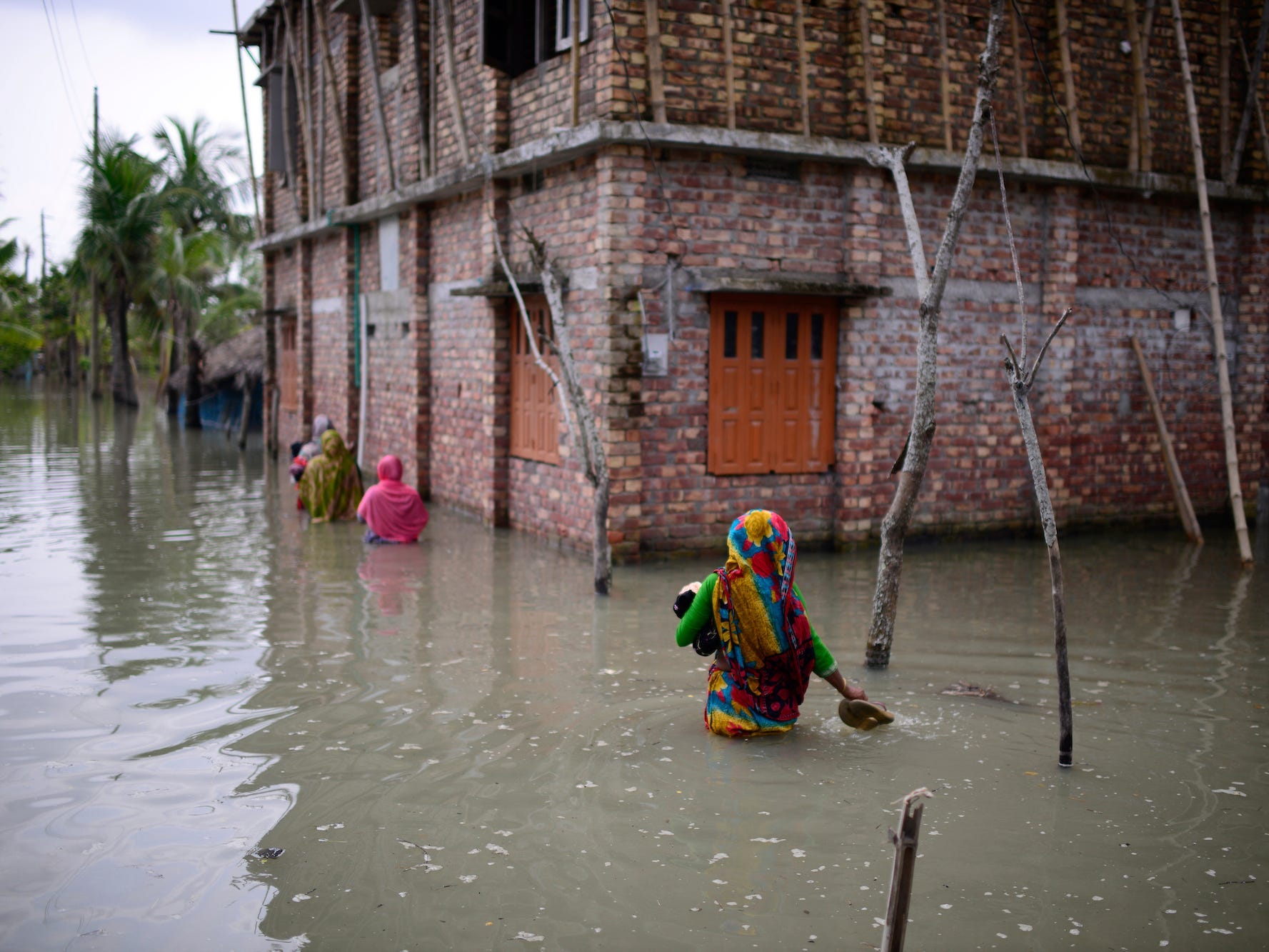
Mahmud Hossain Opu/AP Photo
In 2020, more than 34 billion metric tons of carbon (CO2) were emitted worldwide, but the countries that contributed the least to that total are already facing some of the most significant impacts of the climate crisis.
A UNICEF report published in August found more than 1 billion children, nearly half the world's kids, lived in places with a high risk of extreme weather events. The 33 countries where the climate crisis poses the most risk to children contributed only 9% of global CO2 emissions, while 70% of emissions were attributed to just 10 countries.
A 2016 study found 20 of the 36 highest-emitting countries were among the least vulnerable to the effects of a warming climate, while 11 of the 17 countries with low or moderate emissions were significantly vulnerable.
Some of the countries with low emissions per capita that are at a high risk include Bangladesh, India, Philippines, and multiple countries in sub-Saharan Africa, the Caribbean, and South America.
They are facing heat waves, water scarcity, coastal flooding, and water-borne disease, among other hazards, which in turn can lead to poor sanitation, lack of food, scarce income, and deteriorating living conditions. Meanwhile, many of the places currently experiencing these effects lack the infrastructure or resources to mitigate them.
Experts and climate activists have said that while countries contributing the most need to reduce emissions, poorer countries are in need of immediate funding to address current challenges.
Heat waves have killed thousands in India in recent years
In the summer of 2019, large swaths of India were scorched by temperatures greater than 113 degrees Fahrenheit for nearly three weeks. In some regions, officials closed local schools. Medical authorities canceled time off for doctors to ensure hospitals could handle the influx of patients.
Four passengers fell ill on board an express train that lacked air conditioning, and died by the time the train reached a station in Jhansi, south of New Delhi.
"Shortly after we left Agra, the heat became unbearable and some people started complaining of breathing problems and uneasiness. Before we could get some help, they collapsed," a passenger told India Today.
By the end of that summer heat wave, more than 200 people had died. The heat wave of 2015 was far worse, with extreme heat causing the deaths of more than 2,000 people. In the past decade, more than 6,000 people in India have died as a result of excessive heat, according to government data.
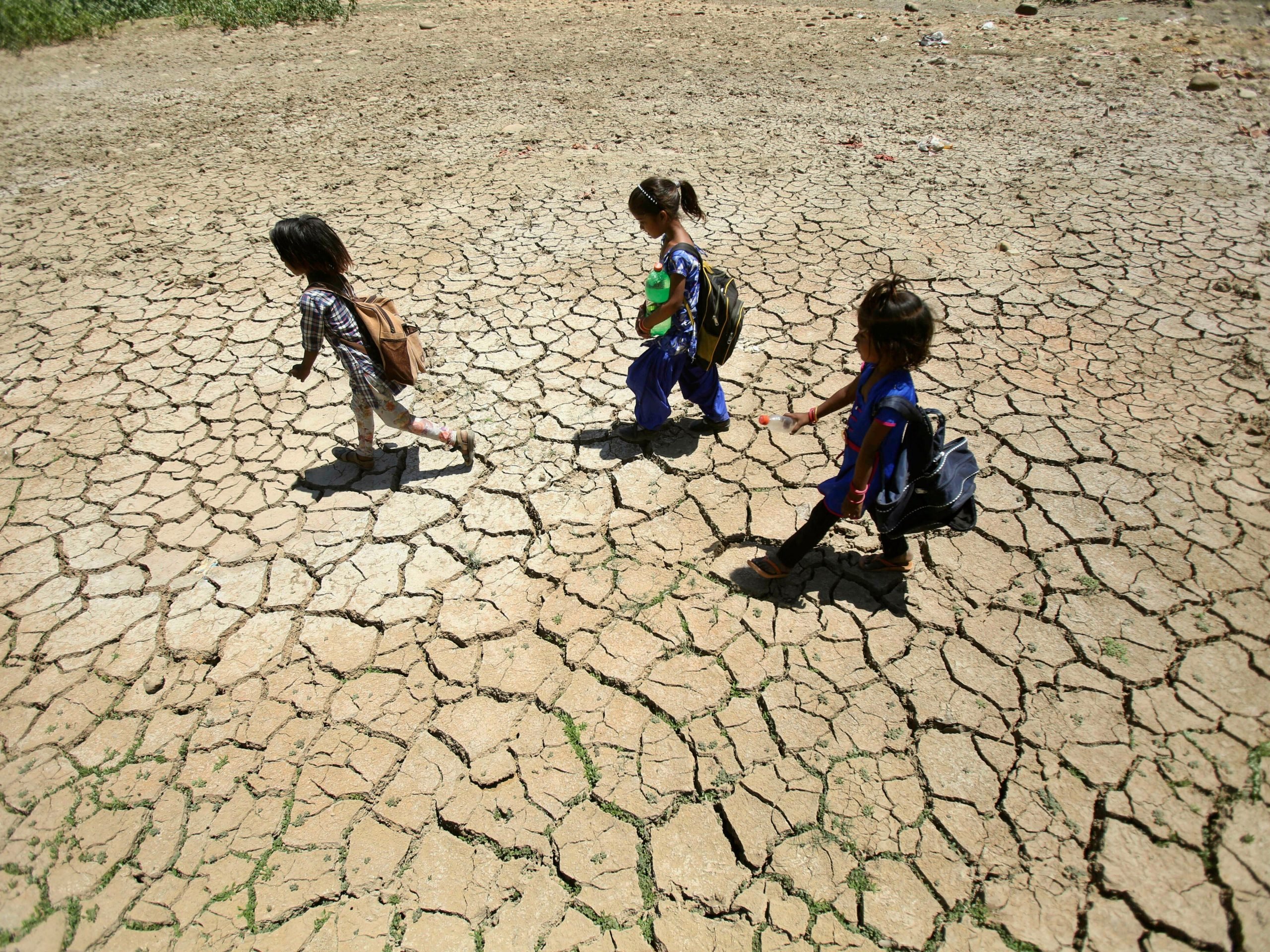
Channi Anand, File/Associated Press
"Climate change is leading to more frequent, more intense, and longer heat waves around the world," said Olga Wilhelmi, a scientist at the National Center for Atmospheric Research, adding that the link has been well-documented.
An estimated 820 million children, more than a third of kids worldwide, are highly exposed to heat waves, according to the UNICEF report.
"Extreme heat is probably one of the least appreciated weather hazards, but it's actually one of the more deadly weather hazards in the US and worldwide," Wilhelmi said. "Studies show that in the US, somewhere on average between 600 and 1,800 people die from extreme heat every year, but we don't usually read about that in the news."
Health complications of extreme heat can vary from dehydration to heatstroke. Heat waves can also exacerbate cardiovascular and respiratory diseases. Groups at a higher risk include older people, children, people with pre-existing conditions, and those who are lower-income and do not have access to air conditioning.
Heat waves can also shut down electric grids when they don't have the capacity to handle the increased demand for air conditioning.
Lack of water leads to poverty and hunger
Water scarcity, the lack of adequate access to clean water, is another way people are feeling the climate crisis.
While scarcity can be due to institutional failures to deliver water, in many instances it's due to dwindling water sources or growing populations that need more water.
More than a third of kids worldwide, 920 million are currently highly exposed to water scarcity.
This issue affects kids in various parts of the world including parts of India, South America, Australia, and the Middle East.
For example, while parts of India are at extreme risk of scarcity, the country only contributed to 3.14% of overall emissions in 2019.
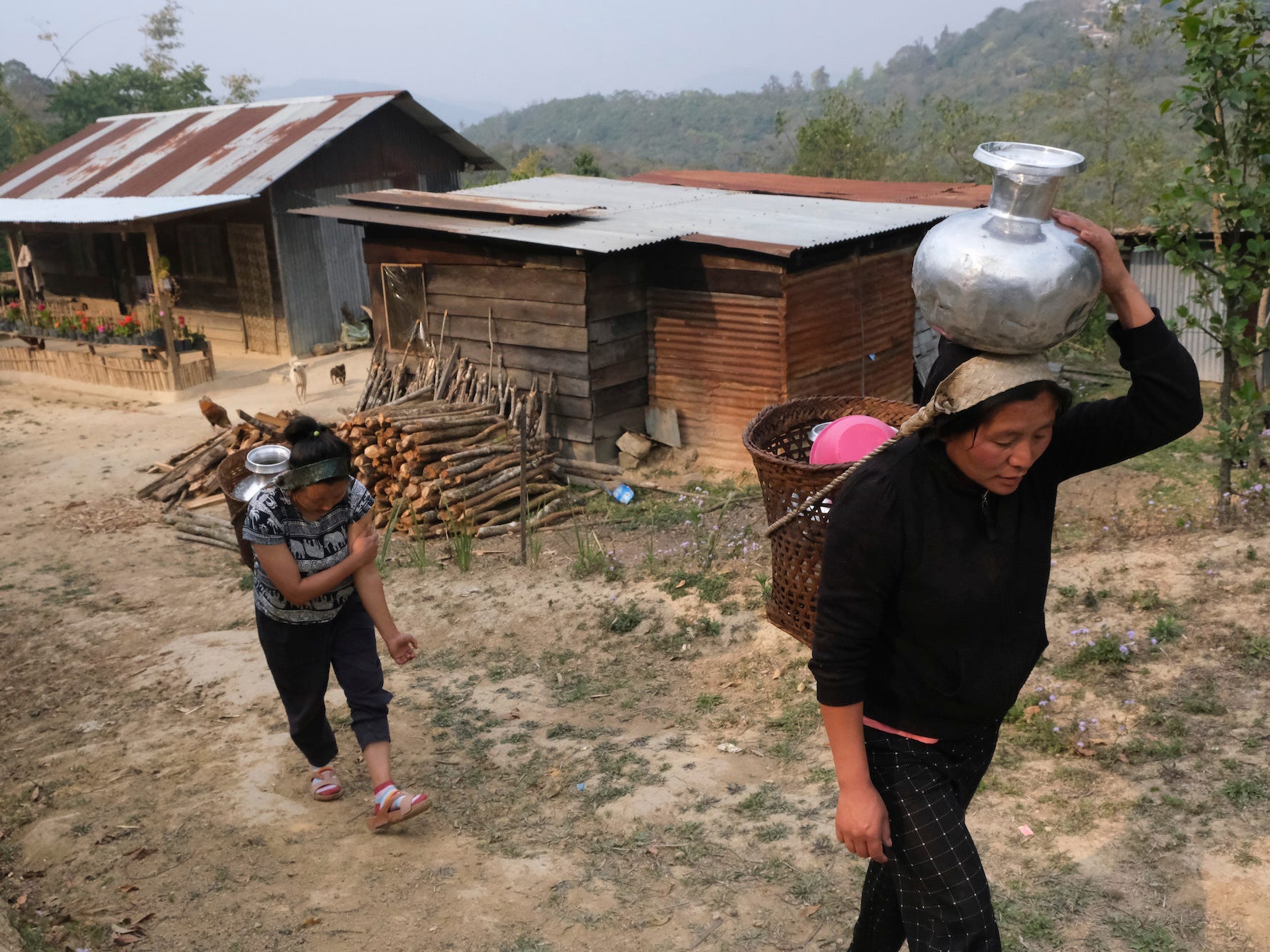
Yirmiyan Arthur/AP Photo
Greg Pierce, the co-director of the Water Resources Group: Institute of the Environment and Sustainability at UCLA, told Insider the biggest effect could be felt in rural areas.
Pierce said rural areas tend to be poorer and have one water source. Residents are usually already walking long distances to get to that water which may not always be clean.
Water isn't just needed for drinking, but for producing and selling agriculture. Water is very much tied to livelihoods.
"The scarcity issue makes it harder to do agriculture, which is what most rural populations rely on for livelihoods. So, there's a hunger, inability to grow food and inability to earn any money," Pierce told Insider. "That lack of water leads directly to people starving and that is going to become a lot more common, unfortunately again, in many parts of the world."
When those resources dry up, residents would be forced to travel even further or move, further straining resources.
While many parts of India are dealing with water scarcity, other regions are also experiencing flooding, Pierce said. However, the flooding comes with other complications and doesn't counter the consequences of water scarcity.
Coastal flooding, which destroys property and resources, is already taking a heavy toll in Bangladesh
In Uddin's home of Bangladesh, rising seas and extreme precipitation have inundated communities with flooding in recent years.
The village of Bonnotola, once home to more than 2,000 people, has less than 500 residents left, as the flooding and salt water-tainted soil destroyed many people's homes and livelihoods, the Associated Press reported.
One woman from the village of Gabura told AP everyone used to grow food in their backyards, but that salt water flooding has disrupted the once-fertile lands and freshwater that many relied on.
"We have water everywhere, but we don't have a drop anymore to drink from ponds or wells," she said.
Almost every ocean on Earth is experiencing a sea-level rise, according to William Sweet, an oceanographer at the National Oceanic and Atmospheric Administration.
One in 10 children, or 240 million, are currently exposed to coastal flooding, according to the UNICEF report. Sea-level rise is exacerbated by extreme rainfall events, which are also a consequence of warming.
"The same heating that's causing oceans to rise, ice caps and ice sheets to melt, and oceans to expand, is also enabling more moisture to be held within the atmosphere," Sweet said, adding that the result is frequent heavy rains. "The combined effect of course is flooding with nowhere for that water to go."
While the threat of entire cities being underwater is the most commonly talked about result of rising sea levels, there are many significant issues that arise well before a city or property is actually underwater.
"It's not when you're underwater, it's when the system fails," Sweet said, adding that flooding can overwhelm infrastructure and destroy roadways, stormwater and wastewater systems, and people's personal property.
He said by the time areas are actually underwater, people are already gone by then, driven out by the flooding.
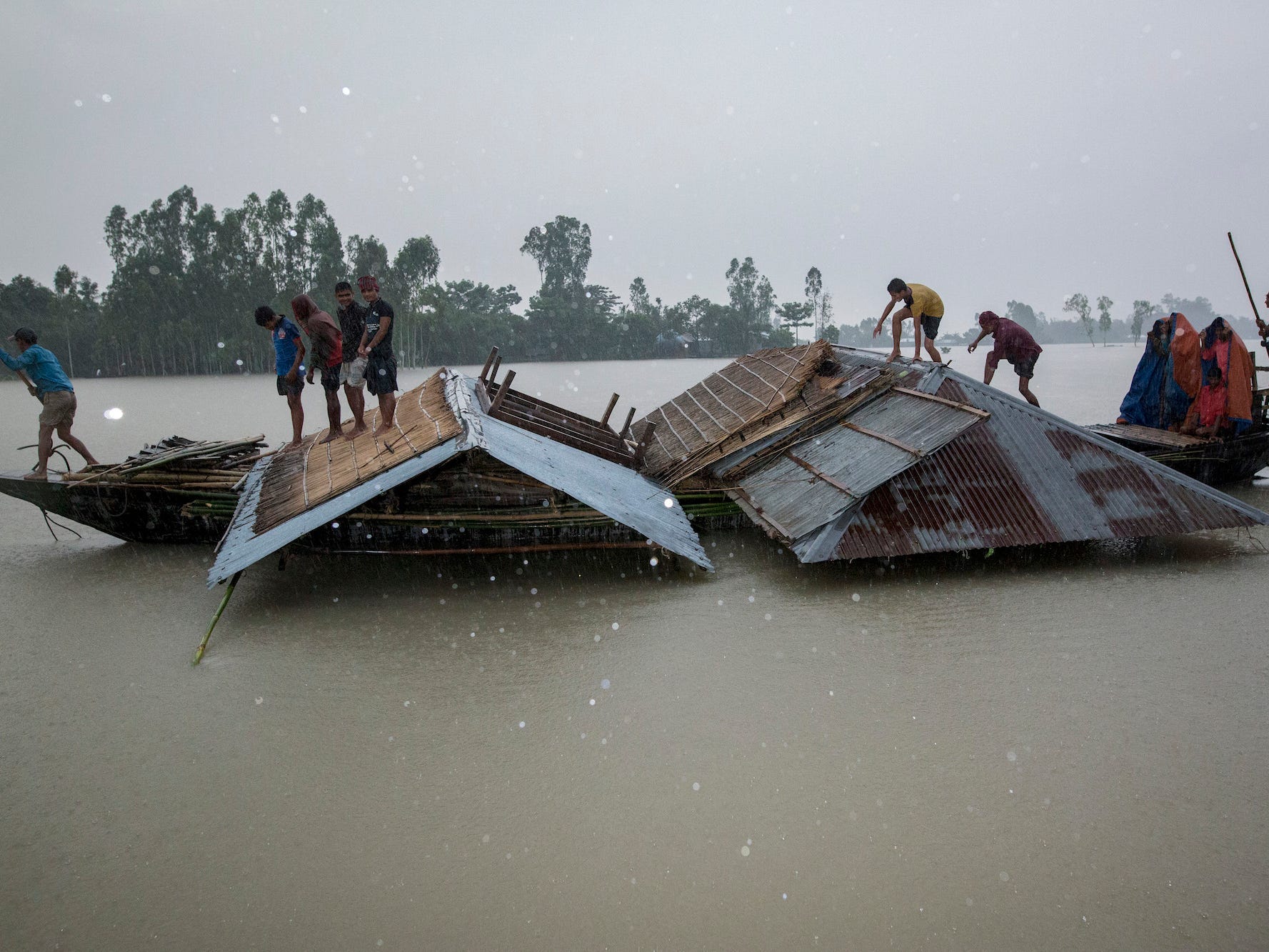
zakir hossain chowdhury / Barcroft Media via Getty Images
Coastal flooding creates more problems where water infrastructure is lacking, Pierce told Insider.
"Flooding doesn't typically increase water supply. It can have a direct impact on water-borne illness, especially because there's poor sanitation in a lot of places and when there's flooding, it gets into wherever the waste is being contained or into the open sewers and spreads," he said.
Diseases are becoming more prevalent in sub-Saharan Africa and South America because of the climate crisis
As temperatures rise, cities flood and water becomes scarce, there's also a rise of waterborne illnesses with an estimated 600 million children currently exposed to diseases like malaria and dengue fever, according to the UNICEF report.
The impact can be most immediately felt in countries in sub-Saharan Africa and South America.
Martin Muchangi, AMREF water and sanitation specialist based in Kenya, told Insider he studies waterborne illnesses across much of sub-Saharan Africa, and that a vast majority of people are dealing with water scarcity which in turn is driving up waterborne diseases.
Muchangi said the issue is twofold: changing temperatures pushing things like mosquitoes into more places and increasing pathogens that cause diarrhea illnesses like cholera and typhoid and the lack of water leading to poor hygiene and diseases like scabies or glaucoma.
He told Insider the problem is leading to harming both people and the economy.
"So now at the end of the day, if you combine the sum total, you realize that there's major economic loss, there's serious effects to the health, there's serious effects to the thriving of children," he said.
Many countries facing the worst of the climate crisis also have the least resources to address it
While nowhere on earth will escape the effects of the climate crisis, some countries have infrastructure and resources that make them more prepared to respond.
Pierce told Insider many of the impacts can be mitigated with robust public health initiatives and proper infrastructure. Water filtration systems, for example, can mitigate the risks of water-borne disease.
Muchangi and Uddin told Insider the countries they live and work in, however, don't have the funds they need to address the issues they're facing.
In Bangladesh, Uddin said funding is needed to direct towards researching ways to remove salt from saltwater and towards building infrastructure that can withstand flooding, including fortifying schools, hospitals, homes, and other essential buildings.
Muchangi said that while finding ways to mitigate the immediate impacts of the changing climate is necessary, limiting CO2 emissions would greatly reduce the burden.
"If we are able to alleviate climate change itself, then the effects of climate change are going to become lesser and we are going to be able to thrive in a better way," he said.
